Existing User Log In
New User Registration
Register for a free account to gain full access to the VGChartz Network and join our thriving community.



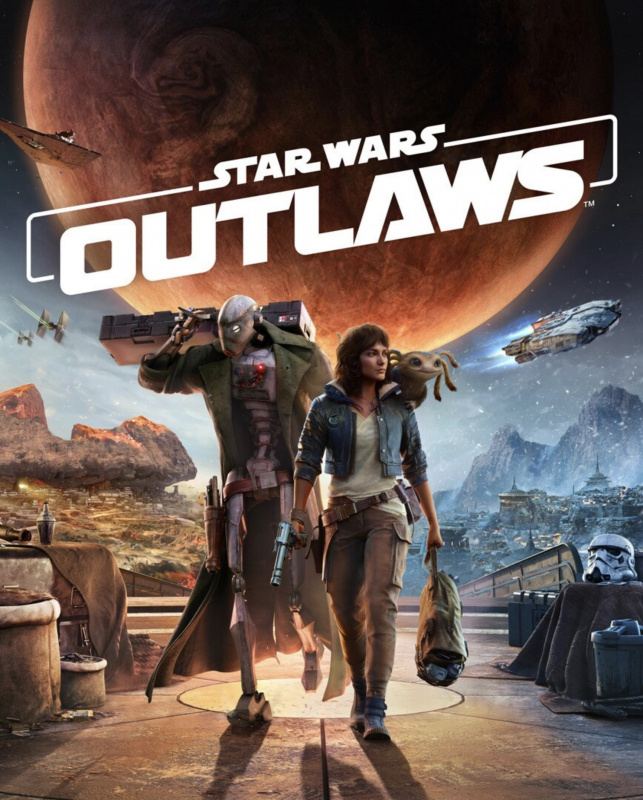

America - Front
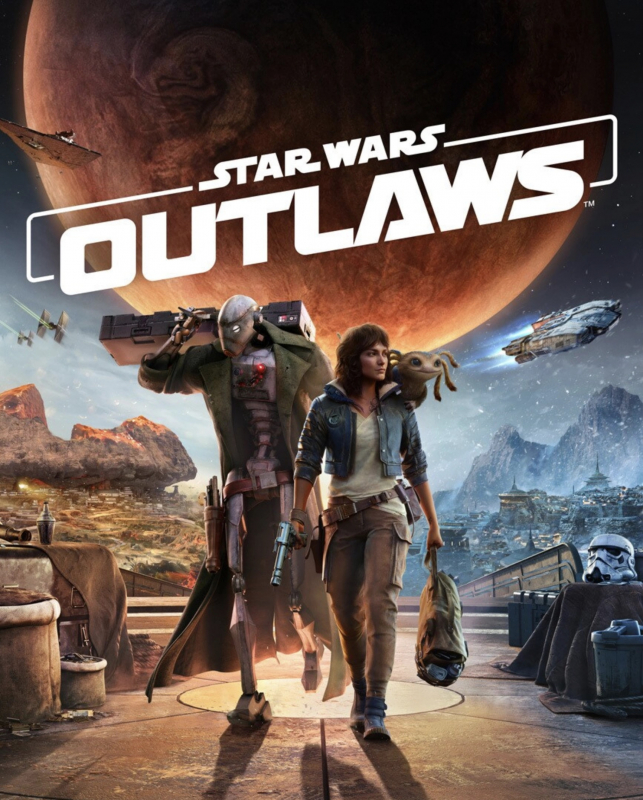

America - Back

Massive Entertainment
Action-Adventure
 (Add Date)
(Add Date) (Add Date)
(Add Date) (Add Date)
(Add Date)
| Owners: | 0 |
| Favorite: | 0 |
| Tracked: | 0 |
| Wishlist: | 0 |
| Now Playing: | 0 |
Reviewer's Note: My experience is based on Version 1.1.2 of the game. Additionally, some SPOILERS are unavoidable when critiquing Outlaws' story, so read on at your own risk.
Whether the Axolotl-like furry companion Nix is leering over a Sabacc player's shoulder or pressing security panels just out of reach, you're trained to see him and Kay Vess as a team. A small creature teammate doesn’t seem impressive at first glance – least of all for Star Wars nearly 50 years on – but it subtly instills a nuanced expectation different from Ubisoft's typical formula. Sure, Massive Entertainment still pack elements into that open-world meat grinder, but the ways in which you interface with the world feel like different ingredients from the standard offal. It's not that far away from Lucas' own start in spirit: a rechurning of centuries-old myths, stylistic reinterpretations of classic samurai films, sci-fi world-building influenced by westerns, and more congealing into something fresh. A shame then that Star Wars Outlaws by contrast radiates more despair than hope.
The boots of Kay Vess are not easy ones to fill, even with her buddy's help. As an orphan and scoundrel desperate for her big break, a golden opportunity comes along that nearly costs her life. After a lucky escape from a major crime lord, Sliro Barsha, Kay and Nix crash-land on Toshara, a moon on the Outer Rim filled with rival syndicates and The Empire. Tensions are high for these dangerous factions, given what's transpired after The Empire Strikes Back. Eventually, she's employed by someone else to gather up a crew to rob her previous captor. The stakes are high, but the score is big enough to set her up for life and to get Sliro's new death mark off her back. 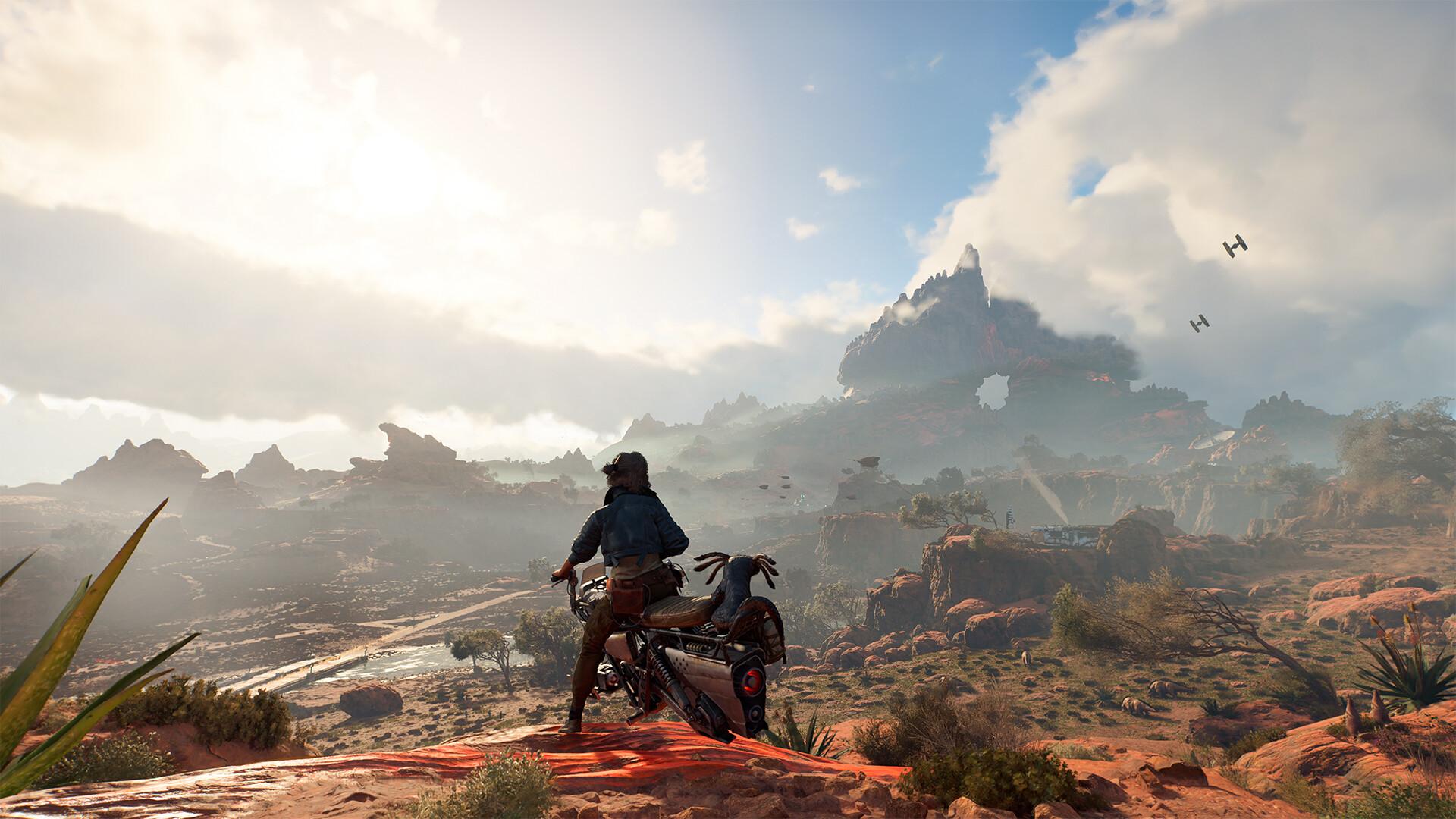
Perhaps it's not the best premise, but whatever potential could be there is tarnished by the systems underpinning it. Venturing across a new vibrant Star Wars planet is a treat unto itself for Massive's environmental artists, even if player navigation is mismanaged. Before seeing the first cutscene, you're given several difficulty presets: Explorer (easiest), Adventurer, Outlaw, and Scoundrel (hardest). One thing missing between these and other customization options is the same level of control over exploration guides; the exception is whether or not you want all climbable spots smattered with yellow paint. Even though there's a nice flow in extracting information from other sources to learn more about Outlaws' worlds, the end result remains a blue icon on the map.
Fortunately, exact pinpoints aren't always as simple as a guided blue line. What starts out as a mission to learn from a revered slicer (Star Wars' version of a hacker) becomes a search 'n rescue into an Imperial base. The coordinates may be clear but approaching this fortified place with an elevated position presents a few opportunities. Like with various main and side quests, the marker's indication doesn't immediately spell out the proper elevation, which demands extra time to familiarize yourself with this topography and consider different ways to sneakily approach.
Given Massive's previous record, the temerity of the team to emphasize stealth so much feels refreshing. Of all the genres Star Wars has explored, one major gap for Lucasarts was a bona fide stealth game; and though Outlaws isn't technically that either, it's the first time in eons where it's more than a little curio or one-off feature. Its prominence also makes its subpar execution all the more frustrating. The fundamental basics of hiding behind cover or tall grass, having Nix interact with highlighted people or objects, and knocking out unsuspecting enemies with Kay remains one-dimensional from beginning to end. What can be northward of a 35-hour campaign (completionist) and the most notable upgrade being a smoke grenade is an egregious example of stealth progression; moreover, even basic feedback like enemy vision cones, auditory limits, and raised suspicion cycles are either imprecise or outright broken. How can I appreciate Kay's quieter steps after an upgrade if these stealth systems never display the loudness of her original crouch-walking volume? I also lost count of how many times a suspicious Stormtrooper would say "you can’t be here!" only for dementia to kick in five seconds later.
As mechanically limited as stealth may be, at least it feels more rewarding than combat. Kay's special blaster pistol adds a touch of depth with its on-the-fly modularity between plasma, ion, & burst shots, but never moves past the rudimentary basics; in fact, there are several ways in which it doesn't reach that modest threshold:
In short, Massive's confounding regression of its previous shooting foundations – especially from The Division 2 – is reminiscent of Sideshow Bob continually smacking rakes.
While also too simplistic for its own good, at least space flight and combat understands it's in a noncommittal relationship. The Trailblazer's locomotion borrows liberally from Battlefront II's arcade-y sensibilities, whilst combat is just locking on targets to dump blaster fire and missiles. Star Wars: Squadrons this is most certainly not. There are also some bugs, such as in the finale when I triggered a fail state for leaving the combat area despite the bad guy being… right in front of me. All in all, scavenging and combat in space is basic, but mercifully limited enough to feel like a passable distraction. That tempered attitude makes its few space events feel like pleasant extras.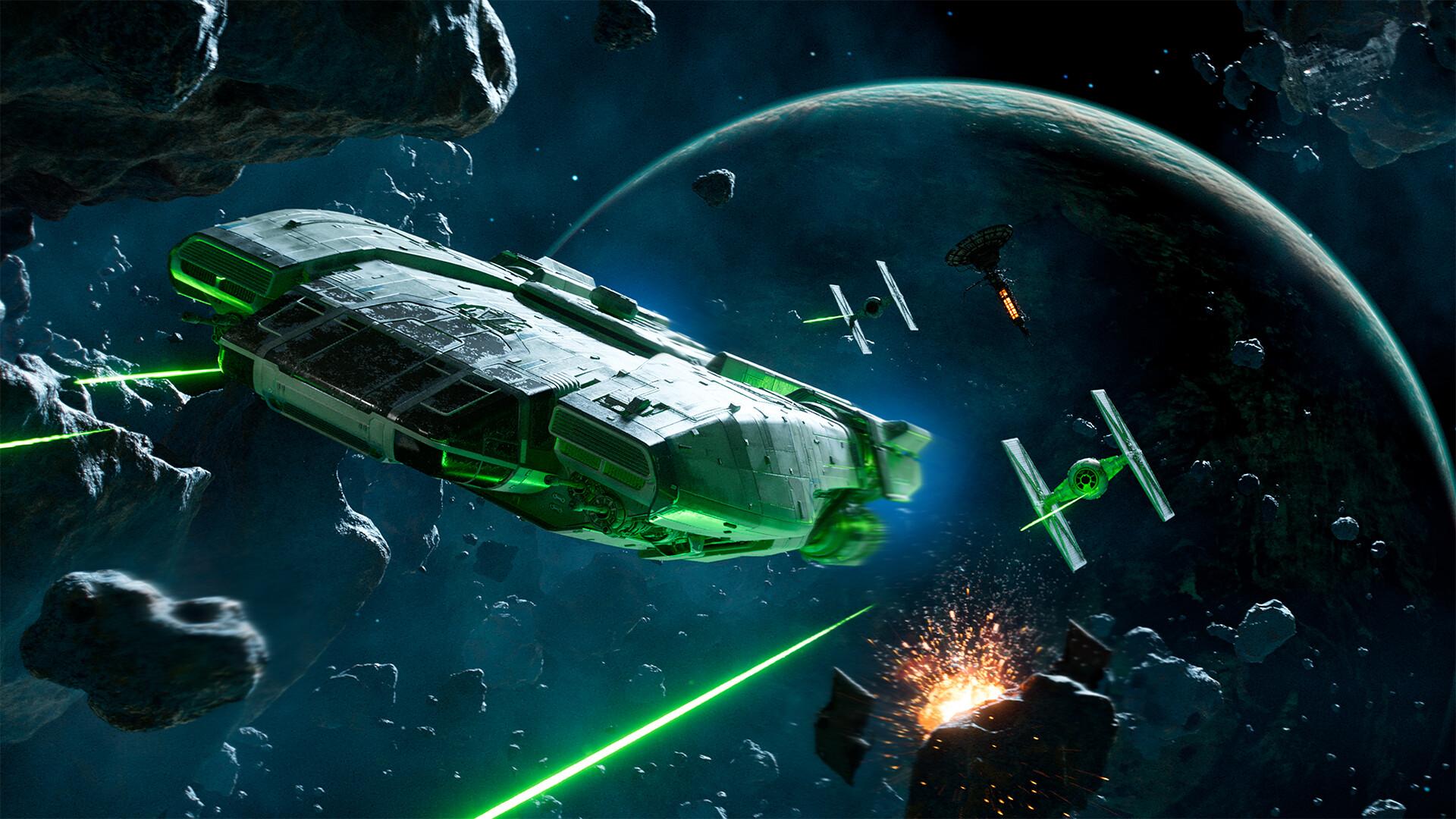
While these foundational errors are… well… massive in effect, I mention them with an air of disappointment instead of sheer disdain because of Outlaws' genuine ambitions. That appeal to authentic Star Wars tourism through several distinct planets in the franchise's first open world isn’t merely a marketing line; true, other Star Wars titles have had open-ended areas to collect various upgrades and trinkets, but you didn't fully imbibe in those worlds like this. Get a Wanted rating after attacking Imperials, slink into the shadows to lay low, have Nix steal from a local gangster, and then gamble that money in a playable Sabacc game. There's a difference between the big MMO space of a planet within Star Wars: The Old Republic and the more Grant Theft Auto-esque world design & rulesets grafted onto this Star Wars world. But even referencing Rockstar's titular franchise reveals how limited Kay's allowed actions often are; she can be 'tough' and 'independent' like a committee-approved Marvel heroine, but not the type of infamous outlaw who flies Slave I (dare I even speak its original name).
To its credit, Outlaws is also interested in getting past certain "Ubislop" staples that wouldn't gel with this world. There's a fog of war over the map, but there aren't any towers to scale nor exorbitant collectible litter spread everywhere. A piecemeal leveling system with incremental stat boosts is kyboshed for Abilities, where you have to take initiative in finding that teacher, finishing their side quest, and then filling out a short checklist to learn a certain new skill. And since several require some type of widget nestled somewhere on the map, there's a more tangible reward to exploring those hot spots. It's a nice update that fits contextually, but it's also annoying how the checklists don't start counting your accomplishments until after you unlock said ability card.
Sometimes getting to said teachers can be made easier or more difficult depending on Kay's standing with the various crime syndicates. Each of the four represented - Hutt Cartel, Crimson Dawn, Pyke Syndicate, & Ashiga Clan – naturally meet her with suspicion at first. At certain junctures within main and side quests, you'll have to make a choice that favors one or the other; in turn, this'll determine freedom of movement within their claimed territory, certain benefits with their designated traders, and whether you can fast travel there. Conversely, getting an awful reputation with them will result in their leader setting kill squads out against you. The concept is great, but the end result is so easy to game. It's similar to Splinter Cell: Double Agent's NSA/JBA sliding scale: giving so many auxiliary means for positive reputation with each faction makes their disgruntled threats feel hollow.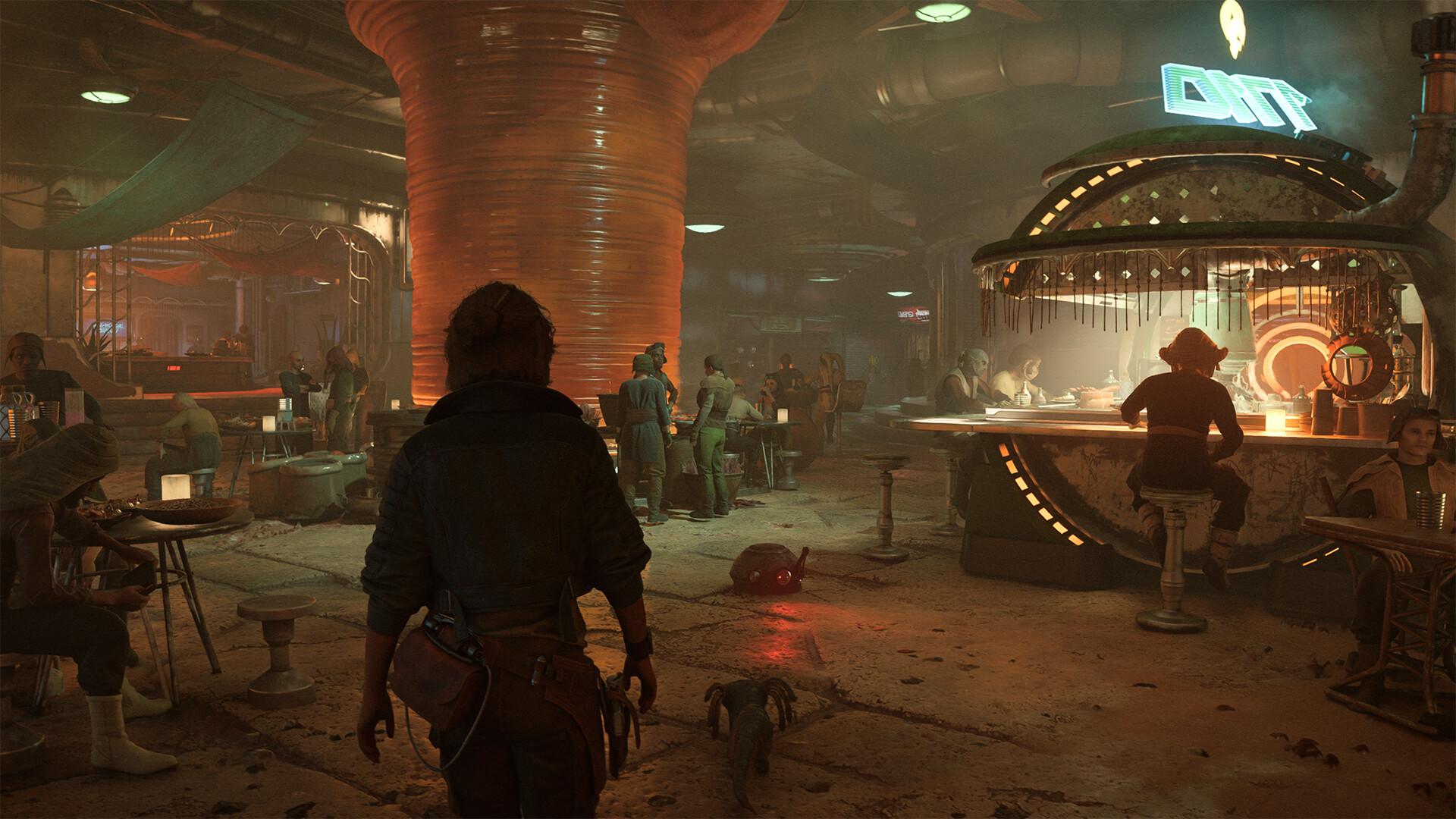
Perhaps the one crucial mechanic that earns top marks is the aforementioned Nix. Similar to Kay's Dead Eye, the world becomes gray-scaled with the touch of a different button (LB) and various objects within range become interactable. Most options – be it fetching, stealing, pulling levers, threat detection, etc. – have be done with animal buddies before, but what gives him an edge is presence and presentation. For example: calling Nix to yank down shutter doors to reveal weak points is typically a short adventure of him scurrying through a tight vent or hopping across tiny platforms beforehand. He also has to run back and clamp onto Kay's shoulders while scaling walls. These seconds accumulate over time, sure, but it's in service to maintaining a genuine connection, which is used especially well during one story beat.
Outlaws' worst problem is how easily I could pour out more thoughts about other annoying flaws or quality concepts in greater detail. Because there are – rare – moments when Massive's design tweaks create an interesting flow state: Kay and Nix finishing a tense main quest, slinking through a syndicate's base to break into its vault, and then gorging on that planet's unique dish at a dishevelled diner. Alongside the impressive world-building of Tatoonie, Toshara, and so on, there are great Star Wars-themed rides here. But all of these fleshed-out environments being strapped to so many gameplay systems that barely feel complete is an absolute shame. When I look at stealth, I reflexively compare it to big-budget contemporaries like A Plague Tale: Requiem or The Last of Us Part II; with shooting, I mentally compare to Red Dead Redemption II or Alan Wake II; with its open world, I look back to Red Dead Redemption II or Grand Theft Auto V. None of these are perfect, of course, but at least they feel finished.
Ubisoft's open world stamp also diminishes this narrative. For the sake of putting a name to it, I think of it as setup-oriented storytelling: character introductions in the first act build up at an orderly pace, but then the task of assembling a new heist crew in the next act is a laggard slog. Imagine if Soderbergh's Ocean’s Eleven didn't begin the casino heist until the final twenty minutes. Since each member's respective location, Tatoonie, Kijimi, and Akiva, can be visited in any order and Massive didn't incorporate unique reactivity around this, there are no intricate character dynamics between them on The Trailblazer outside of empty banter. The amount of filler companion dialogue in Knights of the Old Republic heard within an hour eclipses Outlaws' entire runtime, with special exception to the trench coat-wearing droid ND-5.
ND-5 presents an aggravating dilemma, for better and worse. He's the most engaging character here, but also feels like a false advertisement. Despite his spotlight on the front cover, there's only one particular questline where he physically accompanies you, until the game's story becomes more linear and focused in the final act. To compensate for that, character development feels too sped up to fully land. But there's a catch: another quest, Jabba's Gambit, which also has ND-5 physically with you, is locked behind the Season Pass ($39.99). Yes, in Ubisoft's tactical avarice, they literally lock out a slice of his already-limited development as day one DLC. This also puts me in a bind since, as a Gold Edition buyer ($109.99) who decided to roll the dice on future content, I've now unwittingly helped prop up that practice due to my initial ignorance.
Studio interference of any shape doesn't mean the writers are off the hook though. What starts as a succinct introduction, economically informing players of Kay, Sliro, and each syndicate's personality, turns into a meandering set of sequences until the last few hours. What makes it such a weird hodgepodge is its disordered tempo where the main plot is stuck in orbit while smaller planet-side stories (especially Tatooine) can occasionally squeeze some good tension. Of course, the aforementioned Ubisoft structure is a chief issue, but there were better pathways for its premise and middle to complement its climax. Kay Vess' journey as a cocky low-time scoundrel thrust into a more dangerous world is hindered by her artificial inconsistencies and subpar dialogue as well. Instead of instilling her with measured growth and confidence against the odds, she yo-yos between temperaments on a whim. Its infrequent highs can't compete against such consistent lows.
Those lows are exaggerated by inconsistent presentation as well. Obviously that's discounting the aforementioned worlds crafted with such exhaustive specificity; part of why Outlaws' stealth emphasis initially excited me was thanks to the Star Wars visual & aural minutiae on display: incredible wildlife, Imperial architecture, Underworld enclaves, and so on. No, the issue comes in the other details which echo one of Mass Effect: Andromeda's controversies; namely, why Kay Vess looks like her voice actor, Humberly González, mashed with Laura Loomer. From lip syncing to facial details, there's something genuinely off with human characters compared to the wonderfully-detailed alien counterparts. And this is made worse for Kay given the apparent differences between in-game and CGI cutscenes. Past that, voice acting quality varies significantly for supporting characters, and the soundtrack doesn't measure up to other franchise titles. Cody Matthew Johnson and Wilbert Roget II were right to move away from John Williams' sweeping music for this different tone, but they never found a great new theme.
Overall, Star Wars Outlaws is an ambitious assemblage of different mechanics and concepts gracelessly pressed into an open world too confused to handle them. Almost every integral mechanic is the equivalent of a rough first draft (even feeling incomplete in some respects), the world design is missing a greater level of genuine reactivity, and some advancements away from Ubisoft's standardized formula are mismanaged. That template also hinders both plot and characters, making the tangibly-improved final act feel like a Pyrrhic victory. Massive went to incredible lengths – visually and aurally – to recapture the Cantina scene for the first time, but now with greater fidelity and a deeper sense of world-building. Commendable as that may be, though, not even a Special Edition can save this bucket of bolts.









